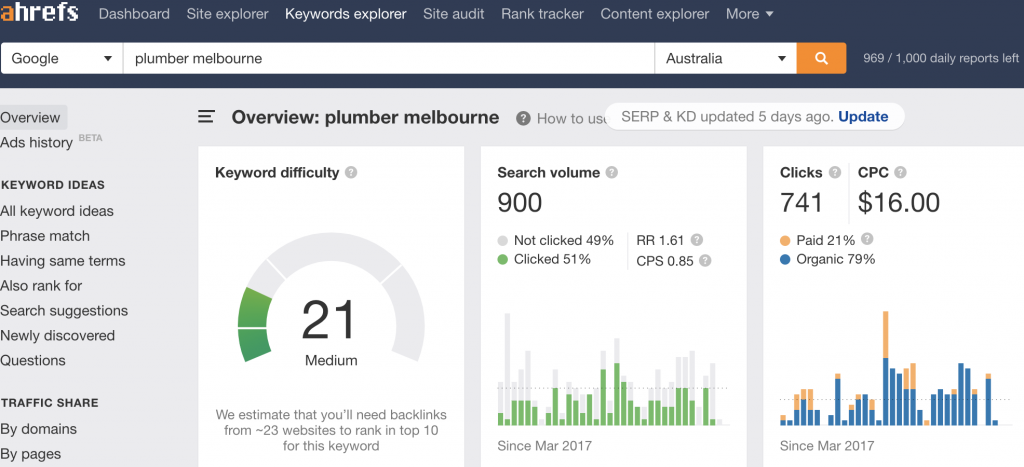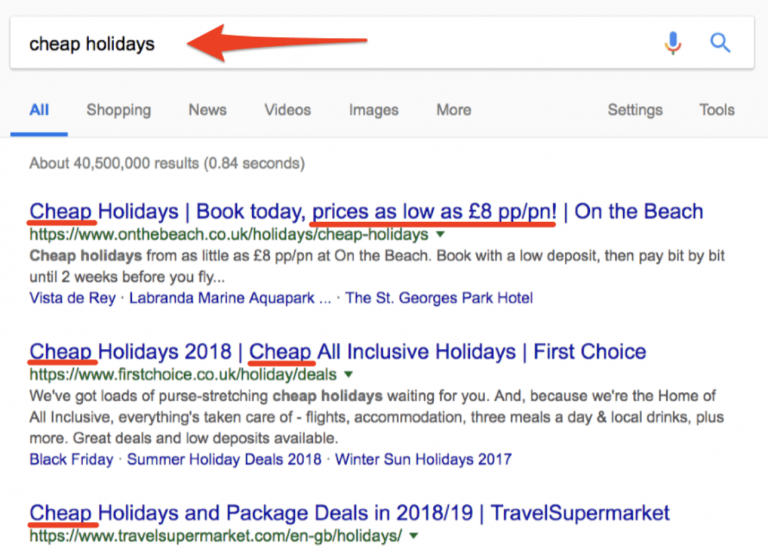Best Practices for SEO Copywriting: 7 Tips for Writing Web Copy That Ranks High
29 Feb 2020
“SEO is dead”. We’ve heard the cry go out with eye-rolling-worthy regularity on blog posts all over the internet.
Here’s a heads up, the demise of SEO is fake news. Search Engine Optimization won’t die anytime soon because it quite simply makes sense.
An early experiment conducted by Groupon shows that over 60% of website searches are organic. That means they originate from search terms instead of paid advertising or directly entering a URL into the search bar.
So, it follows that you can greatly increase your odds of discovery online by catering to the whims of the search engines. You can’t do that without SEO.
It’s not as easy as that though. A search engine can only suggest that customers visit a website. The rest is up to them – and you.
Let’s take a look at how to go about writing web copy that catches the eye of both human and machine:
1. Keywords are Not as Simple as You Think
We’ve already established that hardly anybody wants to type an entire URL into the search bar. Even people who know your URL will use keywords to take them there – would you like them to come across your competitors’ sites first?
Choosing keywords is a vital part of any SEO strategy. Of course, relevant keywords should come up in your copy naturally but that’s not enough. Off the top of your head, how many companies can you think of that are selling products and services that are similar to yours?
Choosing Keywords
Chances are your competitions been targeting the major keywords in that realm already and have worked hard for years making their way to the front page of the SERPs. Commonly searched items, like ‘plumber’, are harder to rank for because there’s a lot of competition for them.
However, you might have a chance if you focus on featuring the word, ‘plumber in Melbourne’ in your copy. There may be fewer searches for that term, but they’re more relevant to your business, and there’s a lot less competition (see below image).
Locally-focussed SEO works well for small businesses, however, Melbourne is a large city, with many plumbing companies, so it’s still difficult to stand out from the crowd. There are several affordable online tools you can use to find keywords that are relevant to your business, yet a little easier to rank for.
Choosing keywords and related keywords for your blogs and web copy is a complex task and you’d do well if you receive ongoing expert help with this vital part of your SEO efforts.
Keywords will feature heavily in all your online copywriting efforts, whether you’re writing web copy or blog posts.

2. Start Strong When Writing Web Copy
Headlines serve as the first impression for a business. They’re big, they’re bold and they’re in the reader’s face. Use this to your advantage.
When writing copy for web pages, you’ll usually make use of an H1 heading followed by an H2 headline. The first one must include your keyword for that page as well as some benefit to the customer. It’s also helpful to add any local terms in this headline, for example, ’24-Hour Plumber in Melbourne’.
This may be a little boring but it’s the main gist of what customers are looking for. When you’re writing a blog post, you want to lure your customers in with enticing words, with web copy, you need to give them what they want.
You can jazz your heading up a little with humour or more information so that it stands out more. For example, ‘The Best-Looking 24-hour Plumber in Melbourne’, or Most Reliable 24-Hour Plumber in Melbourne’. it’s best practice to limit your H1 headline to 60 characters.
For your H2 heading, you need to address some kind of problem that the customer usually has. It also helps to sneak in a related keyword here if you can e.g “Fast, Efficient, and Affordable Plumbing Services”.

There’s a lot of debate surrounding how much H1 tags affect SEO, although general consensus is that they do no harm and they improve the reader’s experience. You wouldn’t publish a blog post without a title, would you?
On its own, an H1 can do nothing to help you. When it’s backed up by relevant, well written and optimized content, it makes a world of difference.
After all, 80% of the web pages on the front page of Google have an H1 headline.
3. Break Up Your Copy
Nobody wants to face a wall of text when they reach a website, so use subheadings often and use them wisely.
Short paragraphs, bulleted lists, and subheadlines guide readers through a page and also describe the content to search engines.
Section your copy with headlines that describe related services. To go back to our example, this helps if prospective customers are searching for a specific term like, ‘shower installation’ instead of general plumbing services.
Not only will this help the search engine to give them what they want, but a sub-heading also helps the client go directly to the information they need.
4. Use Powerful Words
When writing copy for your web pages, it’s important to sound excited about your products and services. It’s the easiest way to convince readers that your business is the best-thing-ever!
Try not to bore them with too many details. Use emotive, positive language and an energetic active voice to show how you can solve all their problems. For inspiration, read through some of the highest-ranking websites in your industry and look at the kind of language they use.
Pepper your copy with expressions like:
- Bargain
- Save
- Reduced
- Leading
- Ultimate
- Don’t miss out
Power words like these create a sense of urgency in readers and prompt them to take action.

Write naturally, avoid cramming your main keyword onto the page every few keystrokes and switch things up with related keywords. For example, variations of the keyword ”plumber in Melbourne” could be ”plumbing services”, “plumbing solutions”, “plumbing repair” or “Melbourne plumber”.
Again, investing in expert help to find suitable power words and related keywords is a good long-term investment.
5. Meta Descriptions Are More Important Than You Think
“What’s that”, I hear you say. The meta description of a site is the few lines of copy that appear below the title on the SERP. They’re the second thing that customers see when they find a website online.
Meta descriptions are one of the most neglected aspects of web copywriting. That’s because you don’t have to have them. If a website does not have a meta description, the search engine will create one.
If that sounds risky, it’s because it is. Take control of your destiny by crafting a keyword-rich, informative meta description for every page of your site. The optimum length for a meta description is 160 characters, so it doesn’t take long to do, but it can have a huge impact on the impression you make.
A good meta description contains your keyword close to the beginning, a benefit for the customer and a brief description of your page. Don’t forget a call to action at the end, like “Call now!”, or “See more…”

Meta descriptions are a low priority for search engines, but most people will read them when deciding whether to enter your website or not.
6. Use Internal and External Links
Internal links between pages on your website make your site more crawlable for the search engines. This means the links provide paths for the search engines to search through your site more easily from one page to the other.
For example, if a search engine is trying to help a customer find a plumber in Melbourne who fixes leaks, it can travel quickly from your home page to your page about leaks via a link from the first page. An easily navigable website is a bonus in the eyes of the search engines and will boost rankings.
Internal links can boost website traffic by up to 40% according to this case study.
External links serve to associate your website with other, credible well-established websites. Try to back up a few facts in your copy with links to reputable sources, it shows that you know what you’re talking about.
7. Don’t Be a Copy Copycat
It goes without saying that plagiarism is not on when writing web copy, but it’s important that you don’t plagiarize yourself either. Every page on your website should have unique, SEO optimized content and it’s own unique keyword.
If you have a separate page for each city where you offer services, the same rule applies. Often it’s best to limit the copy on these pages to area-specific information and then link out to more detailed information about particular services from there.
This has the double benefit of giving you more internal links too.
Stay Informed
Search engines are on a constant quest to improve their services to the clients. As such, they update their algorithms religiously to deal with shady SEO black hat SEO techniques.
While you may not be guilty of these underhanded attempts to lure clicks, web copywriting tips that work today may not be as effective come the next update. Stay on top of the latest information and learn as much as you can about SEO.
There’s a wealth of information available on the internet. Get started by browsing through our website for more information, or get in touch to start working on a tailor-made SEO strategy that gets you found online.